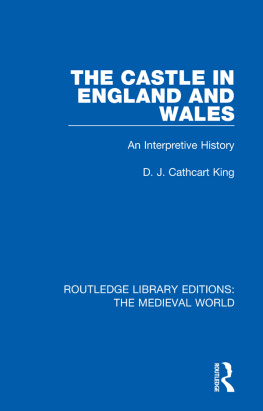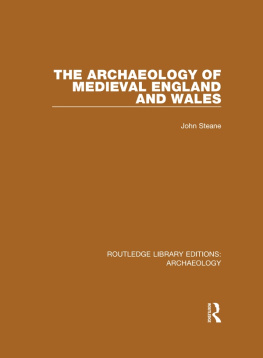First published in 1957 by
Routledge
Reprinted 1998, 1999, 2002
by Routledge
2 Park Square, Milton Park, Abingdon, Oxon, OX14 4RN
Transferred to Digital Printing 2007
Routledge is an imprint of the Taylor & Francis Group
1957 John Saville
All rights reserved. No part of this book may be reprinted or reproduced or utilized in any form or by any electronic, mechanical, or other means, now known or hereafter invented, including photocopying and recording, or in any information storage or retrieval system, without permission in writing from the publishers.
The publishers have made every effort to contact authors/copyright holders of the works reprinted in The International Library of Sociology. This has not been possible in every case, however, and we would welcome correspondence from those individuals/companies we have been unable to trace.
British Library Cataloguing in Publication Data
A CIP catalogue record for this book
is available from the British Library
Rural Depopulation in England and Wales 1851 - 1951
ISBN 0-415-17705-7
Urban and Regional Sociology: 13 Volumes
ISBN 0-415-17830-4
The International Library of Sociology: 274 Volumes
ISBN 0-415-17838-X
Publishers Note
The publisher has gone to great lengths to ensure the quality of this reprint but points out that some imperfections in the original may be apparent
BY LEONARD ELMHIRST,
CHAIRMAN, DARTINGTON HALL TRUST
So great has been our emphasis on food production that little attention has been paid in recent years to the needs of the people living in rural Britain. Arthur Young and William Cobbett have had few successors, Daniel Defoe none. Since Orwin and Ashby died there has hardly been an attempt to describe the impact of new machines and of new wage-levels on farm and village, or the human problems behind the Census figures and the Ministry of Agriculture returns. We do not know what happens when a community becomes too isolated or too small or too destitute of young men or of young women, or of both. We have as yet little precise idea why people move or move in such numbers from certain areas, or why the odd village and the odd country town proves an exception and manages to expand and flourish.
In the absence of evidence, the activity of government, although on such a large scale, is often haphazard. Putting up a row of new houses in a village is the task of the Rural District Council. This might mean that, with more children, the village school need not be closed by the County Council. Encouraging a new factory or workshop to open in a large village or country town suffering from under-employment is the task of another authority. The bringing in of a sewage system, of a new supply of water, power, gas and telephone, are tasks for five different and unrelated authorities which, if they acted together, might make it possible to establish a new factory and strengthen a local economy. The granting of assistance for the purchase and layout of a suitable playing-field or for the building of a village hall falls to two other agencies. Bringing pressure to bear upon the smallholder to close down and upon the small farmer to go to a bigger farm is already the task of yet another; and so it goes ona variety of authorities, all with the purpose of improving rural welfare and yet each acting without full knowledge of the plans of the other. There is a failure of communication.
To replace ignorance by knowledge, never an easy task, demands a many sided research effort, in which we hope the Universities will eventually give a lead. Some of the Universities have already done great service, but their work has been mainly concentrated on the techniques of agriculture. They are still behind their counterparts in the United States and some other countries in giving attention to the social and human, as distinct from the purely economic, problems of rural life. To build up a coherent body of knowledge requires sociologists, anthropologists, historians and geographers as well as economists and specialists in forestry and agriculture. Concerted study could help government to appreciate more fully the interrelationships in the web of rural life, which needs to be seen as a whole to understand the significance of its separate parts.
The Dartington Hall Trust was established at Totnes in Devon not only to undertake practical experiments in rural reconstruction, embracing education and the arts as well as agriculture and industry, but also to promote research into rural life. Some results of this research have been published before, in a variety of books, by W. E. Hiley in Woodland Management,
The Trustees have now decided as part of their activities to sponsor a series of social studies, the first being reported in this book, which is (we think appropriately) by an historian. Mr. Saville has here reviewed the course of population movements, and shows, amongst other things, the great importance of the sex balance in the countryside. Without this kind of assembly of material it is impossible to answer vital questions:
Can the traditional pattern of settlement survive?
Has depopulation in the truly rural areas gone so far as to undermine the viability of the small villages and hamlets?
These and other questions will be considered from other angles in the further reports to be produced in this series.





![Nick Dalton - Frommers England [2012]: & the best of Wales](/uploads/posts/book/223351/thumbs/nick-dalton-frommer-s-england-2012-the-best.jpg)








